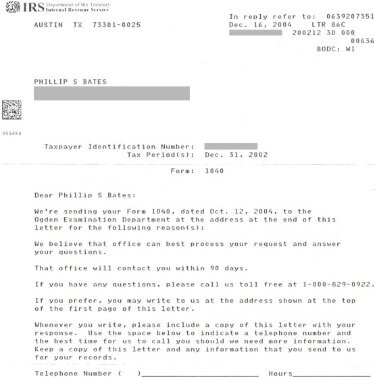Contents:


Although fair value is usually determined by the marketplace, there are several different methods you can use to calculate fair value, including an assessment of the asset’s discounted cash flows. Obtain the book value of the assets, including the business’s fixed assets, intangible assets, current assets, and non-current assets. The value of goodwill is highly subjective, especially since it does not independently generate cash flows. Consequently, the accounting standards require that an acquirer regularly test its goodwill asset for impairment, and to write down the asset if impairment can be proven. This process is somewhat subjective, but an accounting firm will be able to perform the necessary analysis to justify a fair current market value of each asset.
The amount which the acquirer will pay for the target firm over the fair value of the target value is what usually makes up the targets goodwill. If the acquirer more than it is supposed ton pay for the target company, then it will be registered as positive goodwill. On the other hand, negative goodwill arises when the acquirer pays less than the book value of the target firm.
Customer loyalty and good employee morale generally can’t be separated from other assets so they are not separately identifiable. In contrast, a customer list is separately identifiable because it can be rented, sold or leased. Goodwill supplements the net value of a company’s assets to provide a more balanced valuation. Once the fair value of all net assets has been deducted, what remains is goodwill. Likewise, when a company acquires a failing company in a distressed sale, it will likely have negative goodwill. “Impairment” refers to the fluctuations in a business’s fair market value.
The value of goodwill may fluctuate over time due to changes in market conditions or the company’s performance. Goodwill can be subject to impairment testing, where the company assesses whether the fair value of the goodwill on its books is still worth the same amount as in the past. If a company determines its goodwill may have been impaired, it must recognize its impairment loss in its financial statements. The impairment loss can decrease the value of goodwill and the company’s total assets.
Instead, it is only recognized when the business is sold or acquired, and the difference between the purchase price and the fair market value of its identifiable assets is calculated. Goodwill may arise from the acquisition of a company as a whole or a portion thereof. Any costs for amortization, expensing, write-off, or write-down of goodwill are unallowable. Goodwill is an intangible asset (an asset that’s non-physical but offers long-term value) which arises when another company acquires a new business. Goodwill refers to the purchase cost, minus the fair market value of the tangible assets, the liabilities, and the intangible assets that you’re able to identify.
Valuation of a Company
It is classified as an intangible asset on the balance sheet, since it can neither be seen nor touched. Different accounting GAAPs provide different treatments of bargain purchase value i.e. negative goodwill value. Under some GAAPs, the difference of net assets acquired and purchase price is allocated to toe cost of fixed assets except some assets. The value remaining after such allocation is been transferred to profit and loss A/c as an extraordinary gain.
GENIUS BRANDS INTERNATIONAL, INC. Management’s Discussion and Analysis of Financial Condition and Results of Operations (form 10-K) — Marketscreener.com
GENIUS BRANDS INTERNATIONAL, INC. Management’s Discussion and Analysis of Financial Condition and Results of Operations (form 10-K).
Posted: Thu, 13 Apr 2023 13:29:04 GMT [source]
Using the bookkeeping services approach, estimated future cash flows are discounted to the present value. With the market approach, the assets and liabilities of similar companies operating in the same industry are analyzed. The impairment results in a decrease in the goodwill account on the balance sheet.
Company
If the purchase price is higher than the fair value of the acquired business, the excess amount represents goodwill. Conversely, if the purchase price is less than the fair value of the acquired company, the difference is recorded as a gain on the income statement. It’s important to note that calculating goodwill can be a complex process and may involve additional factors. It’s recommended to consult with a financial professional or accountant for assistance. Additionally, goodwill may need re-evaluation to account for company reputation changes or other intangible assets. Goodwill is an intangible asset that represents the market value of a business firm.
In other words, goodwill is the proportion of the purchase price that is higher than the net fair value of all the assets and liabilities included in the sale. Negative goodwill is also commonly referred to as bargain purchase and is generally favourable to the acquiring company. Reporting requirements of negative goodwill varies according to the generally accepted accounting principles .
Goodwill (accounting)
This situation usually only arises as part of a distressed sale of a business. While businesses can build internal goodwill by training employees, maintaining good relations with clients and growing their customer base, they can only record the goodwill of the business that they have acquired. The fair value of the assets was $78.34 billion and the fair value of the liabilities was $45.56 billion. Thus, goodwill for the deal would be recognized as $3.07 billion ($35.85 billion — $32.78 billion), the amount over the difference between the fair value of the assets and liabilities. The Financial Accounting Standards Board , which sets standards for GAAP rules, at one time was considering a change to how goodwill impairment is calculated. There are competing approaches among accountants to calculating goodwill.

In financial modeling for mergers and acquisitions (M&A), it’s important to accurately reflect the value of goodwill in order for the total financial model to be accurate. Below is a screenshot of how an analyst would perform the analysis required to calculate the values that go on the balance sheet. Goodwill represents a certain value that may be obtained by one company when it purchases another. It is that amount of the purchase price over and above the amount of the fair market value of the target company’s assets minus its liabilities. The value of goodwill typically arises in an acquisition of a company. The amount that the acquiring company pays for the target company that is over and above the target’s net assets at fair value usually accounts for the value of the target’s goodwill.
What about privately held dealerships?
For example, suppose Widget has older, well-used manufacturing equipment. There may not be a fully functioning market for that particular used equipment, but there are valuation methods whereby the fair value of the used equipment can be estimated accurately. Fair value might be based on bids to buy the used equipment, recent in similar used equipment, etc. The definition of goodwill is the excess cost of an acquired firm over the current fair value of the separately identifiable net assets of the acquired firm. The value of a company is not only measured in its fixed and current assets or the contents of its current financial statement.
- Understanding the nature of goodwill is crucial for investors and stakeholders in evaluating a company’s financial health and future growth prospects.
- Finally, you need to take the excess purchase price and deduct the fair value adjustments, and you’ll have a figure for goodwill.
- There are competing approaches among accountants to calculating goodwill.
- The value of a company is not only measured in its fixed and current assets or the contents of its current financial statement.
Goodwill is an intangible asset that comes with the purchase of a business by another business. It is classified as the amount you paid for the business, minus the fair market value of the tangible assets, the liabilities, and the intangible assets. An example is if a business sells for $1,000,000, assets are $750,000, liabilities are $100,000.
To determine goodwill with a simple formula, take the purchase price of a company and subtract the net fair market value of identifiable assets and liabilities. Goodwill impairment is a charge incurred when the value of goodwill falls from its previous financial year due to non-functioning of some asset or strategies. The quantity of goodwill is calculated by comparing the estimated value of the operational unit to the fair market value of the reporting unit’s identified net assets. A two-step impairment process should identify probable goodwill impairment by comparing it with the previous year goodwill and calculate the impairment loss. The test of goodwill impairment is checked on annual basis and is aligned with guidelines as per GAAP. An example of goodwill on the balance sheet can be seen in how it affects a company’s overall value.
Impact of Goodwill on Financial Performance
According to IAS 36, reversal of impairment losses for goodwill are not allowed. If the fair value of the reporting unit is less than its carrying value, goodwill has been impaired. If impaired, goodwill is reduced and loss is recognized in the Income statement. If, in subsequent years, the fair value decreases further, then it is recognized to the extent of only $5 million. If the fair value decreases further, then a decrease in fair value is apportioned among all the assets. Acquired by ABC & Co in an acquisition is $10 million, and the amount paid is $12 million, then the journal entry is as follows.

A good reputation can attract customers, investors, and other business partners. Companies with a strong and positive reputation tend to have a higher value of goodwill. The Internal Revenue Code requires the purchaser of a business to allocate the purchase price among the various types of assets. Frequently the purchase price is greater than the sum of the values of the individual assets. Because of its indefinite life, goodwill is not amortizable as an asset. The purchaser will therefore usually try to keep the allocation to goodwill as small as possible.
Reason is simple, its too difficult to measure cost incurred on creating such assets. In absence of reliable measurement, it cannot be recognized in the statement of financial position. Admission of a new partner leads to the reconstitution of a partnership firm. This causes a change in the existing profit-sharing ratio among the partners. When a new partner enters the firm, generally the existing partners have to surrender some of their shares in favour of the new partner.

These include white papers, government data, original reporting, and interviews with industry experts. We also reference original research from other reputable publishers where appropriate. You can learn more about the standards we follow in producing accurate, unbiased content in oureditorial policy.
Companies with a positive reputation and high goodwill are perceived to have a lower risk of losing value. In addition, investors are more likely to purchase stocks from companies with a strong reputation in the market. A company with a high level of goodwill is better equipped to withstand market fluctuations or economic downturns than companies with low goodwill. For instance, during challenging times such as a recession, customers may still choose to avail of services of companies with a high level of goodwill. This improves the company’s financial stability and generates revenue and profits, even during tough times. Goodwill cannot be sold or transferred independently since it is part of the business as a whole.
Goodwill Impairment: Definition, Examples, Standards, and Tests — Investopedia
Goodwill Impairment: Definition, Examples, Standards, and Tests.
Posted: Tue, 23 Feb 2021 08:00:00 GMT [source]
GAAP doesn’t allow entities to record their own goodwill in part because it is so imprecise to measure. Entities can discuss goodwill they have created in their annual reports, but not record it in their balance sheets. If goodwill is created in an acquisition structured as an asset sale, it may be tax-deductible. Goodwill created in an acquisition structured as a stock sale is unlikely to be tax-deductible. Practice goodwill refers to the amount of goodwill specifically for practices, such as a law firm. Practice goodwill is similar to business goodwill as it considers the practice’s overall value.
When the profit of the firm is rising, the value of goodwill also rises. Of course you would, because you’d be willing to pay for the good location, customer awareness, an employee that knows how to run the stand and the kit is already set up and working. Notice that if you just bought the hot dog stand from the owner, not the business, you have only purchased equipment, and there is no goodwill to record. All firms are mandated to estimate and analyze the value of goodwill reflected on their financial statements per annual at the minimum, and also record any error or modifications. A good example is the acquisition of Time Warner by Discovery which was approved in 2022. When Discovery purchased the moviemaking titan, it also purchased intellectual properties like DC comics and Wizarding World/Harry Potter characters that command goodwill from loyal fanbases.
During this process, parent entity mayidentifyand record such assets that were not previously recorded by subsidiary entity in this balance sheet as they were internally generated assets. Internally generated assets are not recognized as its difficult to value them. But now that entity and its assets are changing hands at fair value, therefore valuation of all the intangible assets, previously recognized or not, is possible. Adding up the values of all the identifiable assets will give total value of assets identified at the time of acquisition.
However now it is recognized as gain in P&L A/c in the year of acquisition. Goodwill represents the premium paid for a company over its tangible assets. It provides a competitive advantage in the market, attracting more investors and impressing creditors. Goodwill is recorded on a company’s financial statements and can significantly impact its financial performance. Here is a list of goodwill impacts on a company’s financial performance.